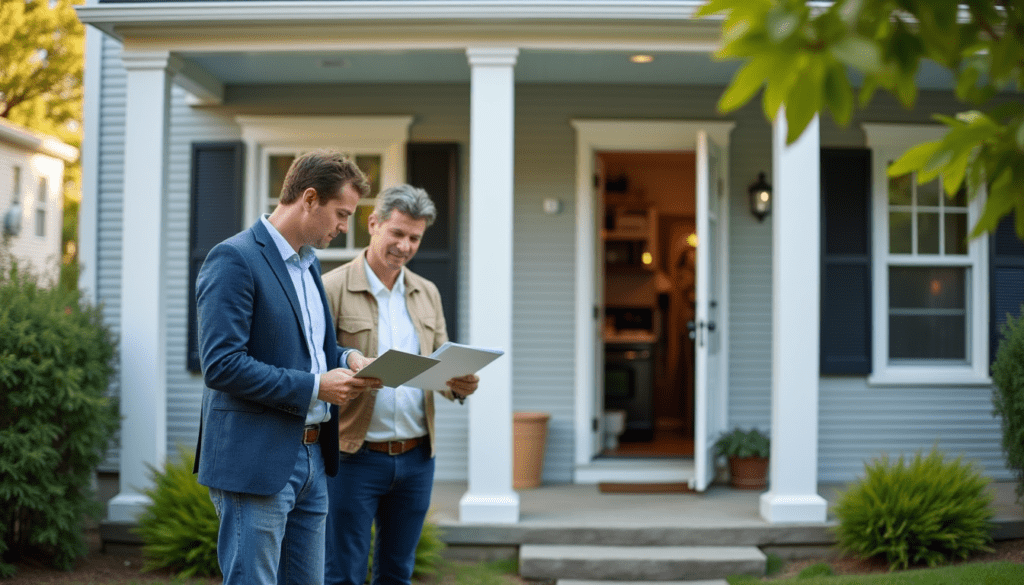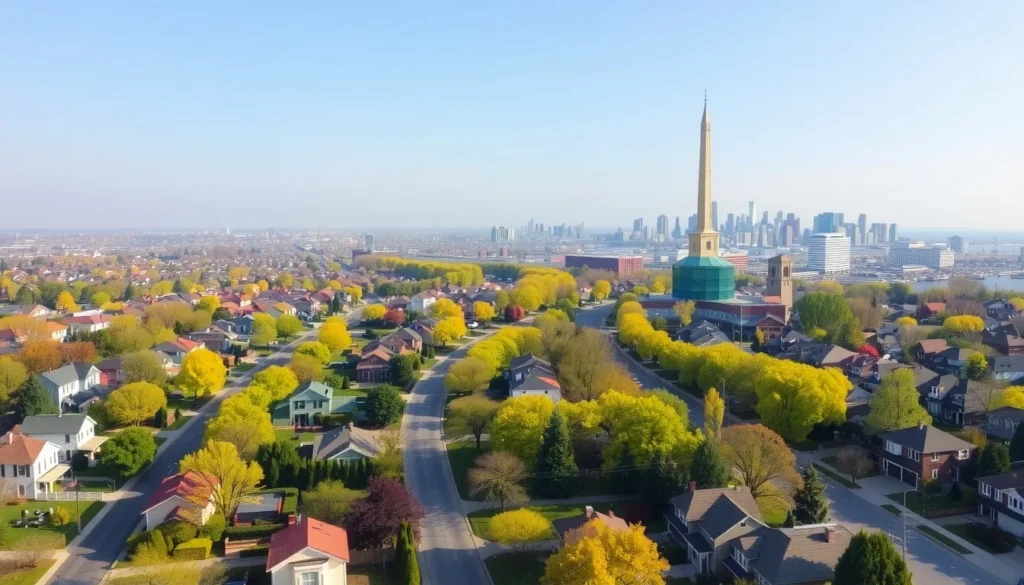1. Introduction: Why Bloomfield, NJ?
Rental property investment is one of the most proven methods of generating long-term wealth, but not all markets are equal. Bloomfield, New Jersey stands out as a promising location for real estate investors thanks to its proximity to New York City, vibrant community, reliable public transportation, and ongoing development efforts. Located just 15 miles from Manhattan, Bloomfield is a commuter-friendly township that blends suburban appeal with urban convenience.
But how do you know if a rental property in Bloomfield is a sound investment? This comprehensive guide outlines key metrics, neighborhood analysis, financial calculations, and practical tips to help you evaluate your next potential rental property with confidence. Whether you’re a first-time investor or expanding your portfolio, knowing what makes a property profitable in this specific location is essential.
2. Understanding Rental Property Investment Basics
Before evaluating any specific property, it’s important to understand what makes a rental property a good investment in general. There are three primary objectives of real estate investing:
- Positive monthly cash flow – ensuring that rental income exceeds operating costs
- Appreciation – the property’s value increases over time, building equity
- Tax advantages – benefits like depreciation, interest deductions, and 1031 exchanges
In Bloomfield, your strategy might involve long-term rentals to working professionals or students, or even multi-unit properties that provide diverse income streams. With high demand and relatively limited inventory, properties that are well-priced and well-located often generate strong returns.
3. Key Metrics to Evaluate Rental Properties
Quantifying a property’s performance is essential. Here are the most widely used formulas and benchmarks investors rely on to determine a property’s viability:
- Cash Flow: Monthly rental income minus expenses (mortgage, taxes, maintenance, insurance, etc.)
- Cash-on-Cash Return: (Annual cash flow / total cash invested) × 100
- Cap Rate (Capitalization Rate): Net Operating Income ÷ Property Price
- GRM (Gross Rent Multiplier): Property Price ÷ Annual Gross Rental Income
For example, if you buy a duplex in Bloomfield for $500,000 and each unit rents for $2,100/month, your gross rent is $50,400/year. If your annual operating expenses are $14,000, your net operating income (NOI) is $36,400. That gives you a Cap Rate of 7.28%, which is strong for this area.
These metrics provide critical insight, especially when comparing multiple properties or neighborhoods within Bloomfield.
4. Analyzing Bloomfield’s Real Estate Market
Bloomfield is a diverse real estate market. While it is considered more affordable than Montclair or Glen Ridge, the township is experiencing steady appreciation and a healthy rental market. As of 2025, the median home price in Bloomfield is approximately $450,000–$500,000, and rental rates for two-bedroom apartments range between $1,900 and $2,600 depending on the neighborhood and condition of the unit.
Investors should watch for:
- Price trends over the last 5 years
- Rental vacancy rates (historically below 5%)
- Public infrastructure projects or zoning changes
- Access to schools, hospitals, and public transportation
Bloomfield’s inclusion in the NJ Transit system with direct lines to NYC makes it particularly attractive for commuters. Properties near stations like Bloomfield Station or Watsessing Avenue often command higher rents and have stronger appreciation potential.
5. Neighborhoods in Bloomfield Worth Considering
Each part of Bloomfield offers unique investment potential. As an investor, you’ll want to balance affordability, rental demand, and long-term property appreciation.
- Watsessing: Proximity to the Watsessing NJ Transit Station makes this neighborhood ideal for NYC commuters. It also has a mix of multifamily and single-family homes that appeal to investors.
- Brookdale: Known for its parks and schools, this area attracts families and offers stable, long-term tenants.
- Downtown Bloomfield: A walkable, transit-accessible area undergoing development, making it ideal for both buy-and-hold and appreciation-focused investors.
- East Bloomfield: Offers slightly lower entry prices and strong potential as surrounding neighborhoods gentrify.
Bloomfield also benefits from spillover demand from nearby Montclair, which helps stabilize rental prices and attract a consistent pool of renters seeking more affordable options.
6. Calculating ROI for Bloomfield Rental Properties
Return on Investment (ROI) is a vital measure of your property’s performance. Let’s break it down with a realistic example:
Imagine you purchase a three-bedroom single-family rental in East Bloomfield for $460,000. After a $60,000 down payment and $15,000 in closing/renovation costs, your total cash investment is $75,000. You rent the property for $2,400/month, totaling $28,800 annually. After deducting $8,800 in annual expenses (taxes, insurance, repairs), you’re left with $20,000 in net income.
ROI = ($20,000 / $75,000) × 100 = 26.7%
This is a healthy ROI by New Jersey standards and highlights why investors are targeting Bloomfield. However, actual returns will vary based on financing structure, market timing, and how efficiently you manage the property.
7. The 1% Rule and Its Application in Bloomfield
The 1% Rule is a common rule of thumb used by real estate investors to quickly assess whether a rental property has the potential to generate positive cash flow. The rule states that the monthly rent should be at least 1% of the property’s purchase price. For example, a $400,000 property should ideally bring in at least $4,000 in gross monthly rent to meet this threshold.
In Bloomfield, NJ, the 1% Rule is harder to meet due to rising property values and high demand. However, this does not mean the investment isn’t worthwhile. A property that falls slightly under the 1% rule can still produce great returns if it offers low maintenance costs, stable long-term tenants, or strong appreciation potential. Additionally, if you’re purchasing a multi-family property, you may be able to meet or even exceed the 1% benchmark more easily than with single-family homes.
8. Gross Rent Multiplier (GRM) Explained
The Gross Rent Multiplier (GRM) helps you compare the value of different rental properties. It is calculated as:
GRM = Property Price / Annual Gross Rental Income
Lower GRMs typically indicate better value. In Bloomfield, GRMs often range from 9 to 14. For example, if a duplex is priced at $500,000 and produces $52,800 in gross annual rent, the GRM is 9.47 — considered favorable by most standards.
When using GRM, it’s important to note that it doesn’t account for operating expenses like taxes or maintenance. So it should be used in conjunction with other metrics like Cap Rate or ROI to get a full picture of the property’s investment quality.
9. Capitalization Rate (Cap Rate) Insights
The Capitalization Rate (Cap Rate) is a key performance indicator that measures the return on a property independent of financing. It’s a vital metric for comparing investment opportunities.
Cap Rate = Net Operating Income (NOI) / Property Value
In Bloomfield, Cap Rates for residential rental properties typically range between 5% and 8%. A Cap Rate of 6–7% is often considered healthy in this market, especially given its low vacancy rates and proximity to NYC. Properties with higher Cap Rates may involve greater risk or require more maintenance, so balance is key.
Use Cap Rate not just to evaluate a single property, but also to compare how it performs against others in the same neighborhood or zip code.
10. Evaluating Property Appreciation Trends
Besides cash flow, many investors also look for appreciation — the increase in property value over time. Bloomfield has seen steady appreciation over the past 10 years, with annual price increases averaging 5–7% in many neighborhoods.
Factors driving appreciation in Bloomfield include:
- Continued suburban migration from NYC and Jersey City
- Investment in local infrastructure and public spaces
- Gentrification and new business development in downtown areas
- Strong school districts in neighborhoods like Brookdale
Tracking historical sales data, price-per-square-foot changes, and local redevelopment plans can help you predict future appreciation. Appreciation is particularly valuable for investors with a longer horizon or those planning to leverage equity for additional purchases.
11. Assessing Rental Demand and Vacancy Rates
High tenant demand and low vacancy rates are signs of a solid rental market. In Bloomfield, demand remains high thanks to:
- Proximity to major employment hubs in Newark and New York City
- Reliable public transportation, including multiple NJ Transit train stations
- Bloomfield College and Montclair State University student populations
- Limited new rental construction relative to population growth
Rental vacancy rates in Bloomfield typically range between 3% and 5%, which is considered low and healthy for investors. To assess a property’s rental demand, check rental listings on platforms like Zillow, Trulia, and Apartments.com. A short time on market and multiple inquiries often signal strong demand.
12. Financing Options for Investment Properties
How you finance a property plays a critical role in its long-term profitability. In New Jersey, including Bloomfield, you can consider the following options for financing an investment property:
- Conventional loans: Require 15–25% down for investment properties
- FHA loans (for house hacking): Live in one unit, rent the rest
- Portfolio loans: Offered by local banks with flexible underwriting
- Hard money loans: For short-term rehab or flip strategies
- HELOC or cash-out refinance: Use equity from existing properties
Mortgage rates for investment properties tend to be slightly higher than for primary residences, and lenders often require more documentation. Shop around to get pre-approved before making offers, and factor in all costs (PMI, taxes, insurance) to calculate accurate cash flow.
13. Tax Implications and Benefits of Rental Properties in NJ
One of the most powerful advantages of investing in rental property — especially in a tax-heavy state like New Jersey — is the ability to leverage real estate tax strategies. Understanding how these strategies apply in Bloomfield can significantly increase your bottom line.
Key tax benefits include:
- Depreciation: You can depreciate the value of the building (not land) over 27.5 years, reducing your taxable income.
- Mortgage Interest Deduction: You can deduct the interest portion of your mortgage payments.
- Operating Expense Deductions: Property taxes, insurance, utilities (if paid by owner), maintenance, and even property management fees are deductible.
- Capital Gains Tax Deferral: Through a 1031 exchange, you can defer taxes by rolling your profits into another rental property.
New Jersey does not offer as many landlord-friendly tax breaks as other states, but the federal advantages still apply. Partnering with a local CPA who understands real estate investment in Bloomfield is critical to maximizing your returns and staying IRS-compliant.
14. Property Management Considerations in Bloomfield
If you’re wondering whether to self-manage or hire a property management company, consider the time commitment, legal compliance, and tenant coordination involved. In a town like Bloomfield, where tenants may expect quick responses and professional communication, hiring a local manager can be a smart move — especially if you live outside Essex County.
Top reasons to hire a property manager in Bloomfield:
- They handle tenant screening, lease signing, and rent collection.
- They understand New Jersey landlord-tenant laws and compliance issues.
- They can oversee repairs, inspections, and maintenance using local contractors.
- They assist with eviction procedures if necessary (which must comply with NJ law).
Expect to pay between 8–12% of monthly rent for property management services. While this cuts into your cash flow, it often pays off in time saved and legal risk avoided. For example, Rent Shield Property Management (your internal link) could be an ideal partner if you’re investing in Bloomfield or nearby areas.
15. Common Pitfalls to Avoid
Even in a promising market like Bloomfield, investors can fall into common traps. Here are a few to avoid:
- Overestimating Rent: Never rely solely on “for rent” listings. Use rented comps to verify realistic market rents.
- Ignoring Property Taxes: NJ has one of the highest property tax rates in the country. Bloomfield averages around 2.6%, so factor that into your calculations.
- Underestimating Repairs: Many older homes in Bloomfield were built in the early 20th century and may require major upgrades like new roofs, boilers, or lead paint remediation.
- Not Budgeting for Vacancy: Even in a hot rental market, leave room in your budget for at least 1 month of vacancy annually.
- Neglecting Legal Requirements: New Jersey requires specific disclosures, certificates of occupancy, and habitability standards.
Due diligence is everything. Don’t fall for emotion or hype. Let the numbers — and thorough research — guide your purchase decisions.
16. Case Studies: Successful Investments in Bloomfield
Let’s review two real-world examples of successful rental property investments in Bloomfield:
Case Study 1: Multi-Family Near Bloomfield Station
An investor purchased a 3-family home for $575,000 in 2022. Each unit rents for $2,000. After $25,000 in light renovations and an annual $10,000 tax bill, the property now generates $72,000 annually in gross income, with approximately $52,000 net. The Cap Rate is 9%, and the property has appreciated to an estimated $635,000.
Case Study 2: Two-Family in East Bloomfield
A new investor bought a fixer-upper for $425,000 and invested $60,000 into upgrades. Rents are $1,950 and $2,100. After all expenses, the investor nets $29,000/year, generating a 12.3% cash-on-cash return. They used an FHA loan and live in one unit — a classic “house hacking” success story.
These examples demonstrate that both seasoned and new investors can succeed in Bloomfield with the right analysis and planning.
17. FAQs: “People Also Ask” Style Questions
Is Bloomfield, NJ a good place to buy rental property?
Yes. Bloomfield offers strong rental demand, proximity to NYC, diverse housing stock, and stable property appreciation.
What is a good Cap Rate in Bloomfield?
A Cap Rate between 6% and 8% is considered strong for the area. Lower rates can still be acceptable with high appreciation potential.
How do I calculate ROI on a rental in New Jersey?
Divide your annual net income by the total cash invested (down payment + closing + repairs) and multiply by 100 to get your ROI.
What are the average rents in Bloomfield, NJ?
Average rents range from $1,800–$2,600 depending on size, location, and condition of the property.
Do I need a property manager in Bloomfield?
Not mandatory, but highly recommended if you’re investing remotely or managing multiple units. Professional managers improve efficiency and legal compliance.
18. Conclusion: Making Informed Investment Decisions
So, how do you know if a rental property is a good investment in Bloomfield, NJ? It comes down to understanding your financial goals, using the right metrics, and evaluating both numbers and neighborhoods. With strong tenant demand, proximity to New York City, and consistent property appreciation, Bloomfield offers compelling opportunities for buy-and-hold investors, house hackers, and multi-unit buyers alike.
Perform your due diligence, work with experienced professionals, and always base decisions on data — not assumptions. By doing so, you position yourself to build equity, generate passive income, and create long-term wealth right here in Essex County.
Ready to invest in Bloomfield? Contact our team at Rent Shield Property Management to get help analyzing deals, managing properties, and maximizing ROI.






